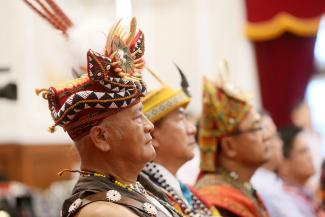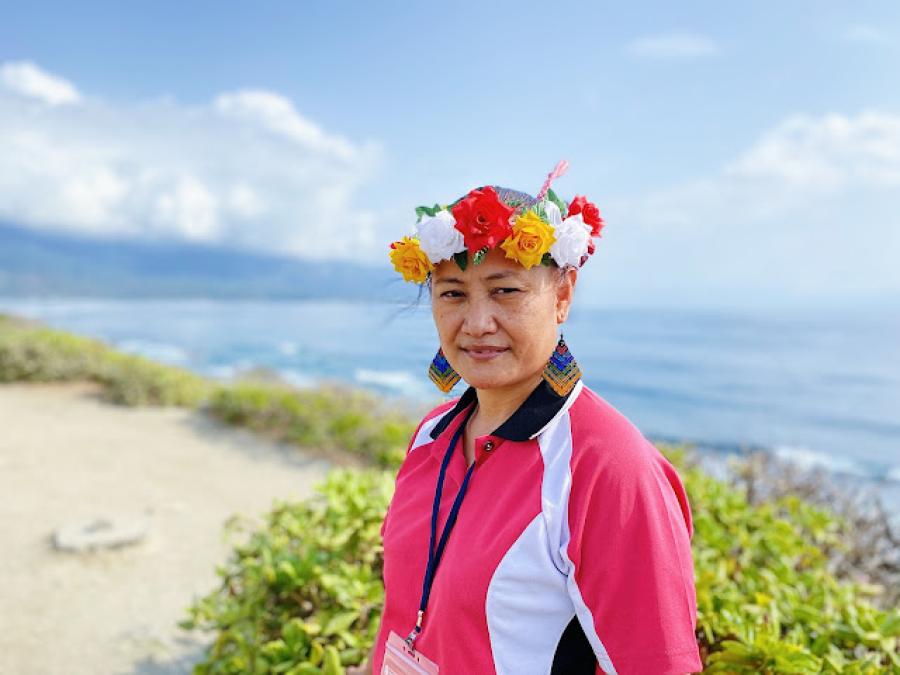


Tsai Ing-wen won the presidential election of Taiwan on January 16, 2016 by a large margin, earning over 56 percent of the vote. The election results signaled a turning point in Taiwan’s democracy, with the Democratic Progressive Party winning a majority of the seats in the legislative yuan (lawmaking body) as well. Tsai accepted the “will of the Taiwanese people” as a sign that citizens wanted a significant change from former failed policies and unfulfilled promises.
Soon after her inaugration on May 20, Tsai’s administration quickly declared a commitment to transitional justice. Their plan included setting up a transitional justice commission for abuses against citizens during the martial law era (1946–1987) and a commission for abuses against Taiwan’s indigenous citizens. When the President announced she would make a formal apology to Indigenous Peoples on behalf of the government, some were hopeful, but many doubted that it would lead to change. Doubters referenced the Indigenous Peoples Basic Law, established on February 5, 2005 during the Chen Shui-bian administration, claiming that it did not adequately protect their rights, especially when their traditional practices conflicted with Taiwan’s laws. Pessimism among Indigenous people also came from promises made by former President Chen, which did not materialize.
Leading up to the formal apology, Indigenous leaders and protestors expressed their hopes to see improvements in a variety of issues, such as land rights, hunting rights, and tribal autonomy. There was concern that various Indigenous groups would fight over limited resources offered for reconciliation, especially if the government includes the Pingpu (lowland) tribes, which are not currently recognized. There was also concern that the new policies would be made without direct consultation with Indigenous Peoples and communities. A professor at National Dong Hwa University reminded Indigenous people that the seeking of truth and justice would be complicated, as this was “a crime with no perpetrators, and no beneficiaries—only victims.”
The formal apology to Taiwan’s Indigenous Peoples took place on August 1, 2016, which the president’s cabinet officially declared as national Indigenous People’s Day. Indigenous leaders from every recognized Taiwanese tribe, dressed in traditional clothing, entered through the front entrance and were greeted by the president. After the doors closed, protesters, some of whom had walked hundreds of kilometers from their home villages and had been occupying the street in front of the presidential palace since the previous night, rushed towards the entrance, wanting to be heard. They were held at bay by a police with riot shields and no one was hurt.
The president’s speech was both substantial and specific, with a clear and direct acknowledgment of responsibility. The apology for “four centuries of pain and mistreatment” admitted that during the past 400 years, every regime “brutally violated the rights of Indigenous people through armed invasion and land seizure; acknowledged the “erasing” of thousands of years of Taiwanese history by dominating government; expressed remorse for the erosion of languages and cultural identities through government assimilation policies, especially those of the Pingpu (lowland) tribes; apologized for the negative consequences suffered by the Yami tribe after the storage of nuclear waste on Orchid Island; and admitted that the Indigenous Peoples Basic Law of Taiwan had not been given sufficient weight by government agencies.
It was a politically risky move for Tsai to make a formal apology to Indigenous Peoples, as it went against the Asian cultural convention of avoiding apologies and confrontation in order to to save face. In offering a formal apology, Taiwan’s president did what no other Asian government leader had ever done. Taiwan is now only the fourth government in the world to offer an apology to its Indigenous Peoples.
Tsai expressed her motivations for an apology to all Taiwanese people in her speech. “To see what was unfair in the past as a matter of course, or to treat the pain of other ethnic peoples as an unavoidable part of human development, this is the first mindset that we, standing here today, resolve to change and overturn,” she said. Further championing her cause for change, she added, “Unless we deny that we are a country of justice, we must face up to this history. We must tell the truth. And then, most importantly, the government must genuinely reflect on this past.”
Just as many Indigenous leaders and protestors warned that the apology would be empty without meaningful action and Indigenous representation, the president agreed to discuss the establishment of presidential commissions Indigenous historical justice and transitional justice. Tsai’s speech promised that the commission would “place the greatest importance on equality between the country and the Indigenous Peoples” and declared that the commissions serve as a “mechanism for collective decision-making by Indigenous Peoples [to] ensure that the voices of tribal members find true expression.” She further committed to examining relevant laws to begin the formal process of giving status and rights to the Pingpu tribes; directed relevant agencies to investigate the decision-making process of storing nuclear waste on Orchid Island and find a permanent solution for nuclear waste storage; and offered appropriate compensation to the Yami tribe on Orchid Island. After the moving apology, Capen Nganaen, a representative of the Yami Tribe, commented, “Taiwan has had many presidents during its history, but never before has one been willing to offer an apology to the Indigenous Peoples.”
Immediately after the speech on August 1, Indigenous leaders, academics, and government workers began the complicated task of putting together policy to fulfill on the President’s promises. Just a few hours after the apology, President Tsai addressed the Council of Indigenous Peoples and Indigenous leaders during a working session on Indigenous policy. Meanwhile, activists camped out in front of the office of the president, demanding that President Tsai recognize their presence and their call for “nation-to-nation” dialogue. On Wednesday, August 3, Tsai surprised the demonstrators by making an impromptu visit on the street, speaking directly with the leaders of the demonstration, including Indigenous singer and activist Panai Kusui. When Panai asked the president where she places the nation’s Indigenous Peoples, Tsai placed Panai’s hand to her heart and responded, “You are here.” The meeting concluded with Tsai inviting Panai to join the transitional justice team.
As a news story, Taiwan’s official apology to Indigenous Peoples gained considerable interest. From it, international readers, especially Indigenous people around the world, can learn from the apology and resulting developments. Indigenous communities can teach their leaders what is possible when a government accepts responsibility to establish a stronger foundation built on truth and justice, and they can take heart in knowing that it is possible for Indigenous people and governments to work together towards reconciliation and mutual respect.
— Tony Coolidge is a Taiwanese-American journalist and entrepreneur with Atayal roots.
All photos courtesy of the Office of the President, ROC.

